Guide to Additive Manufacturing
Unlock the Potential of Additive Manufacturing with this Guide to Additive Manufacturing.
Additive Manufacturing (AM) is a revolutionary technology that has the potential to revolutionize the way products are designed and manufactured. It is a process of creating three-dimensional objects from a digital file by adding successive layers of material. This guide will provide an overview of the different types of AM, the materials used, and the advantages and disadvantages of using this technology. It will also discuss the current state of the industry and the potential applications of AM. Finally, it will provide some tips for getting started with AM.
What is Additive Manufacturing and How Does it Work?
Additive Manufacturing (AM) is a process of creating three-dimensional objects from a digital file. It is also known as 3D printing and is a rapidly growing technology that is being used in a variety of industries.
The process of Additive Manufacturing begins with a 3D model created in a computer-aided design (CAD) program. This 3D model is then converted into a digital file that can be read by the 3D printer. The 3D printer then builds the object layer by layer, using a variety of materials such as plastic, metal, and even ceramics.
The process of Additive Manufacturing is much faster and more efficient than traditional manufacturing methods. It also allows for greater design flexibility, as the 3D model can be easily modified and adjusted to create a variety of shapes and sizes. Additionally, the process is much more cost-effective, as it eliminates the need for expensive tooling and machining.
Additive Manufacturing is being used in a variety of industries, from aerospace and automotive to medical and consumer products. It is also being used to create custom parts and prototypes, as well as to produce end-use products.
The future of Additive Manufacturing looks bright, as the technology continues to evolve and become more accessible. As the technology advances, it will become even more cost-effective and efficient, allowing for greater design flexibility and faster production times.
The Benefits of Additive Manufacturing for Businesses
Additive manufacturing, also known as 3D printing, is a revolutionary technology that is transforming the way businesses produce goods. This technology offers a wide range of benefits that can help businesses increase efficiency, reduce costs, and improve product quality.
One of the primary benefits of additive manufacturing is its ability to reduce production costs. By using 3D printing, businesses can reduce the cost of materials, labor, and energy. This is because 3D printing eliminates the need for traditional manufacturing processes such as machining, molding, and casting. Additionally, 3D printing can reduce the cost of prototyping and product development, as it allows businesses to quickly and easily create prototypes and test new designs.
Another benefit of additive manufacturing is its ability to increase production speed. 3D printing can produce parts and products much faster than traditional manufacturing processes, allowing businesses to meet tight deadlines and reduce lead times. Additionally, 3D printing can reduce the amount of time needed for product development and prototyping, as it allows businesses to quickly and easily create prototypes and test new designs.
Additive manufacturing also offers businesses the ability to produce complex parts and products with greater accuracy and precision. 3D printing can produce parts and products with intricate details and complex geometries that would be impossible to achieve with traditional manufacturing processes. This allows businesses to create products with greater functionality and performance.
Finally, additive manufacturing can help businesses reduce waste and improve sustainability. 3D printing eliminates the need for traditional manufacturing processes such as machining, molding, and casting, which can produce a large amount of waste. Additionally, 3D printing can reduce the amount of energy needed for production, as it eliminates the need for large-scale production facilities.
In conclusion, additive manufacturing offers businesses a wide range of benefits that can help them increase efficiency, reduce costs, and improve product quality. By utilizing 3D printing, businesses can reduce production costs, increase production speed, produce complex parts and products with greater accuracy and precision, and reduce waste and improve sustainability.
The Different Types of Additive Manufacturing Technologies
Additive manufacturing, also known as 3D printing, is a process of creating three-dimensional objects from a digital file. This technology has revolutionized the way products are designed and manufactured, allowing for greater customization and faster production times. There are several different types of additive manufacturing technologies, each with its own unique advantages and disadvantages.
The most common type of additive manufacturing technology is Fused Deposition Modeling (FDM). This process involves melting and extruding thermoplastic filament to create a three-dimensional object. FDM is a cost-effective and reliable method for producing parts with complex geometries.
Stereolithography (SLA) is another type of additive manufacturing technology. This process uses a laser to cure liquid resin into a solid object. SLA is ideal for producing parts with intricate details and smooth surfaces.
Selective Laser Sintering (SLS) is a type of additive manufacturing technology that uses a laser to sinter powdered materials into a solid object. This process is ideal for producing parts with complex geometries and intricate details.
Direct Metal Laser Sintering (DMLS) is a type of additive manufacturing technology that uses a laser to sinter metal powder into a solid object. This process is ideal for producing parts with complex geometries and intricate details.
Multi Jet Fusion (MJF) is a type of additive manufacturing technology that uses a combination of heat, pressure, and fusing agents to create a three-dimensional object. This process is ideal for producing parts with complex geometries and intricate details.
These are just a few of the many types of additive manufacturing technologies available. Each type has its own unique advantages and disadvantages, so it is important to consider the specific needs of your project before selecting a technology.
How to Choose the Right Additive Manufacturing Technology for Your Business
Additive manufacturing (AM) is a rapidly growing technology that is transforming the way businesses produce parts and components. With the wide range of AM technologies available, it can be difficult to determine which one is best suited for your business. This guide will provide an overview of the different AM technologies and help you select the right one for your needs.
First, it is important to understand the different types of AM technologies. The most common types are 3D printing, powder bed fusion, and material extrusion. 3D printing is a process that uses a digital model to create a three-dimensional object. Powder bed fusion is a process that uses a laser or electron beam to melt and fuse metal powder into a solid object. Material extrusion is a process that uses a nozzle to extrude a filament of material, such as plastic or metal, into a desired shape.
Once you have a basic understanding of the different AM technologies, you can begin to evaluate which one is best for your business. Consider the materials you need to produce, the size and complexity of the parts you need to create, and the production volume you require. 3D printing is best suited for producing small, complex parts with a low production volume. Powder bed fusion is ideal for producing large, complex parts with a high production volume. Material extrusion is best for producing parts with a medium production volume and a variety of materials.
Finally, consider the cost of the technology. 3D printing is typically the most cost-effective option, while powder bed fusion and material extrusion are more expensive. Additionally, consider the cost of materials, as some materials may be more expensive than others.
By considering the different types of AM technologies, the materials you need to produce, the size and complexity of the parts you need to create, the production volume you require, and the cost of the technology, you can select the right additive manufacturing technology for your business. With the right technology, you can produce parts and components quickly and cost-effectively, helping your business stay competitive in today’s market.
The Challenges of Additive Manufacturing and How to Overcome Them
Additive manufacturing, also known as 3D printing, is a revolutionary technology that has the potential to revolutionize the way products are designed and manufactured. However, it is not without its challenges. In this article, we will discuss some of the challenges of additive manufacturing and how to overcome them.
One of the biggest challenges of additive manufacturing is the cost. 3D printing materials and machines can be expensive, and the cost of production can be high. To overcome this challenge, companies should look for ways to reduce costs, such as using recycled materials or finding more cost-effective machines. Additionally, companies should consider using open-source software and hardware to reduce costs.
Another challenge of additive manufacturing is the time it takes to produce a product. 3D printing can be a slow process, and it can take a long time to produce a single product. To overcome this challenge, companies should look for ways to speed up the process, such as using faster machines or using more efficient software. Additionally, companies should consider using automation to reduce the amount of time it takes to produce a product.
Finally, one of the biggest challenges of additive manufacturing is the lack of quality control. 3D printing can produce products with imperfections, and it can be difficult to ensure that the products are of the highest quality. To overcome this challenge, companies should invest in quality control systems that can detect and address any imperfections in the products. Additionally, companies should consider using automated quality control systems to ensure that the products are of the highest quality.
In conclusion, additive manufacturing is a revolutionary technology that has the potential to revolutionize the way products are designed and manufactured. However, it is not without its challenges. Companies should look for ways to reduce costs, speed up the process, and ensure quality control in order to overcome these challenges and make the most of this technology.
The Future of Additive Manufacturing and What it Means for Businesses
Additive manufacturing, also known as 3D printing, is a rapidly growing technology that is revolutionizing the way businesses produce goods. This technology has the potential to revolutionize the way businesses operate, from product design to production and distribution.
Additive manufacturing is a process that uses digital 3D models to create physical objects. It works by depositing layers of material, such as plastic, metal, or ceramic, in a predetermined pattern. This process is much faster and more efficient than traditional manufacturing methods, such as injection molding or machining.
The advantages of additive manufacturing are numerous. It is much faster and more cost-effective than traditional manufacturing methods. It also allows for greater customization and flexibility in product design. Additionally, it is more environmentally friendly, as it eliminates the need for large amounts of energy and materials.
The potential applications of additive manufacturing are vast. It can be used to create complex parts for aerospace, automotive, medical, and consumer products. It can also be used to create custom products, such as jewelry or art. Additionally, it can be used to create prototypes and test products quickly and efficiently.
The future of additive manufacturing is bright. As the technology continues to improve, it will become even more cost-effective and efficient. This will open up new opportunities for businesses to create innovative products and services. Additionally, it will allow businesses to reduce their environmental impact by eliminating the need for large amounts of energy and materials.
In conclusion, additive manufacturing is a rapidly growing technology that has the potential to revolutionize the way businesses operate. It is faster, more cost-effective, and more environmentally friendly than traditional manufacturing methods. As the technology continues to improve, it will open up new opportunities for businesses to create innovative products and services.
Tips for Optimizing Your Additive Manufacturing Processes
1. Start with the Right Design: Before beginning the additive manufacturing process, it is important to ensure that the design is optimized for the process. This includes considering the size, shape, and complexity of the part, as well as the material and process parameters.
2. Use the Right Materials: Selecting the right materials for the application is essential for successful additive manufacturing. Consider the properties of the material, such as strength, flexibility, and thermal conductivity, as well as the cost and availability of the material.
3. Optimize the Build Process: Optimizing the build process can help to reduce costs and improve the quality of the parts. Consider the build orientation, layer thickness, and build speed to ensure that the parts are built efficiently and with the highest quality.
4. Monitor the Process: Monitoring the process is essential for ensuring that the parts are built correctly. This includes monitoring the temperature, pressure, and other parameters to ensure that the parts are built correctly.
5. Post-Processing: Post-processing is an important step in the additive manufacturing process. This includes cleaning, finishing, and inspecting the parts to ensure that they meet the desired specifications.
6. Quality Control: Quality control is essential for ensuring that the parts are built correctly and meet the desired specifications. This includes inspecting the parts for defects and ensuring that they meet the desired tolerances.
7. Maintenance: Regular maintenance of the additive manufacturing equipment is essential for ensuring that the parts are built correctly and with the highest quality. This includes cleaning and inspecting the equipment, as well as replacing worn parts.
Conclusion
Additive manufacturing is a revolutionary technology that has the potential to revolutionize the way products are designed and manufactured. It offers a wide range of advantages, including cost savings, improved product quality, and faster production times. With the right tools and knowledge, additive manufacturing can be used to create complex parts and products with greater accuracy and precision than ever before. As the technology continues to evolve, it is likely that additive manufacturing will become an increasingly important part of the manufacturing process.
Manufacturing Resources
- 3D Printing Solves Supply Chain Challenges
- Additive Manufacturing is Transforming Supply Chain.
- Best 3D Printing Quotes.
- Guide to Lean Manufacturing
- Supply Chain Collaboration on Social Media.
- Top 5 Manufacturing Innovations of the Last Decade
- What is IoT?
- What is Production Management?





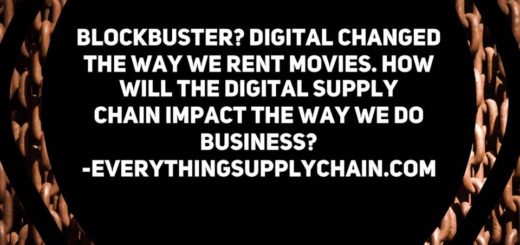
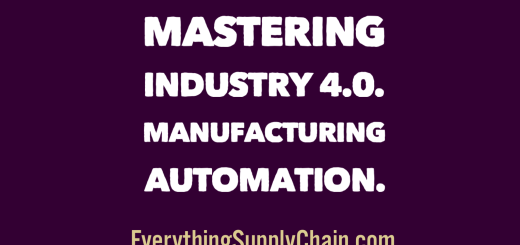

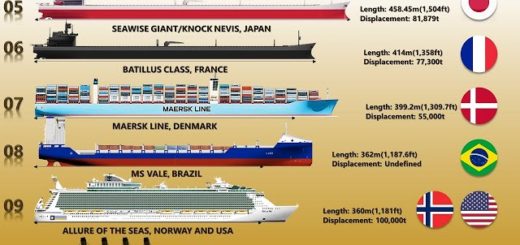



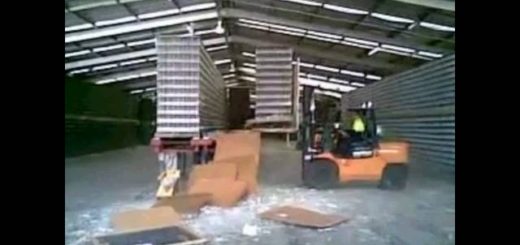










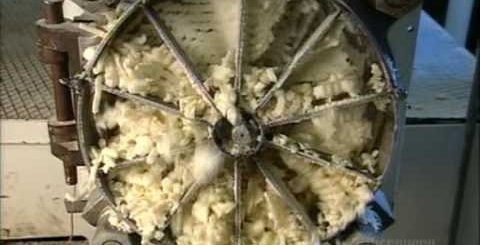



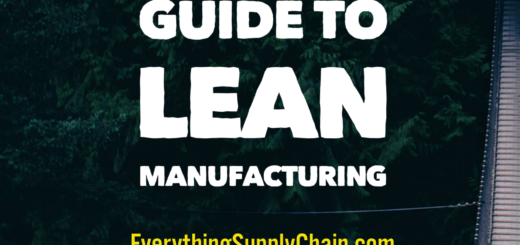















1 Response
[…] Guide to Additive Manufacturing […]